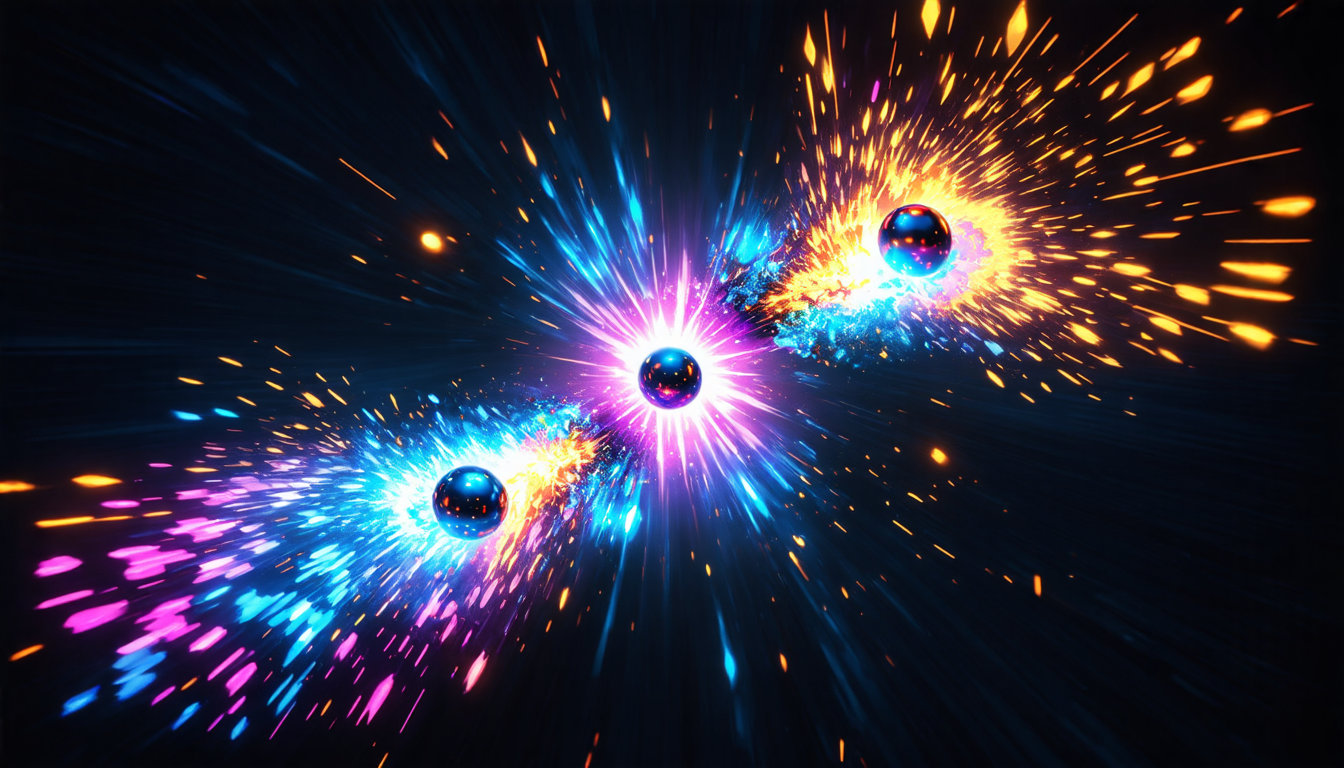Wednesday 23 July 2025
Scientists have made significant strides in understanding the behavior of matter at high energies, shedding light on the mysteries of heavy-ion collisions.
By studying the interactions between particles at extremely high temperatures and densities, researchers can gain insights into the fundamental nature of matter itself. The Integrated HydroKinetic Model (iHKM) is one such tool, designed to simulate the complex dynamics of these collisions.
The model has been used to study Au+Au collisions at various center-of-mass energies, ranging from 7.7 to 39 GeV. By analyzing the particle spectra produced in these collisions, scientists can gain a deeper understanding of the underlying physics.
One key finding is that the iHKM successfully reproduces experimental results from the STAR experiment within the RHIC Beam Energy Scan program. This suggests that the model is capable of accurately describing the collective behavior of particles in heavy-ion collisions.
Further analysis reveals that the model’s predictions are sensitive to variations in key parameters, such as the relaxation time and thermalization degree during the prethermal stage. These findings have important implications for our understanding of the equation of state transition in the hydrodynamic phase.
The study also explores the evolution of chemical and kinetic freeze-out across different collision energies and centrality classes. This provides valuable insights into the properties of strongly interacting matter formed in heavy-ion collisions, spanning a wide range of energies and baryon chemical potentials at RHIC.
Overall, this research has significant implications for our understanding of high-energy particle physics and the behavior of matter under extreme conditions. The iHKM is a powerful tool that can help scientists unravel the mysteries of these complex phenomena, ultimately shedding light on the fundamental nature of matter itself.
The results have also sparked further investigation into the properties of strongly interacting matter, with researchers exploring its potential applications in fields such as particle physics and cosmology. As scientists continue to push the boundaries of their understanding, it is clear that this research will have far-reaching implications for our understanding of the universe.
Cite this article: “Unveiling the Secrets of High-Energy Particle Collisions”, The Science Archive, 2025.
Heavy-Ion Collisions, Particle Physics, High-Energy Particle Physics, Matter Behavior, Integrated Hydrokinetic Model, Ihkm, Star Experiment, Rhic Beam Energy Scan Program, Equation Of State Transition, Freeze-Out.







